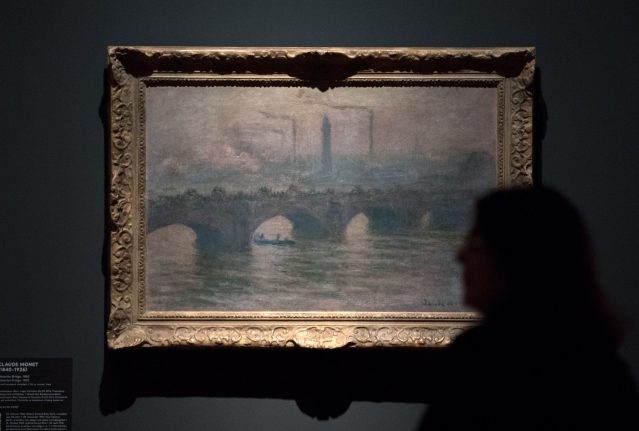One of the rightful heirs — to whom the painting was returned — last remembered seeing it the day his great-uncle signed over his estate to the Nazis at a villa in what is now Poland.
“I was instructed to wait outside the room in which the paperwork was being signed,” David Torén was quoted by the auction house as saying in a statement.
“It was in there, in the conservatory, that I sat opposite the beautiful painting of the two horse riders on the beach,” he said.
Torén is the great nephew of David Friedmann, a construction tycoon who was arrested in November 1938 in the wake of Kristallnacht — a series of attacks against Jews in Germany and Austria.
The work, “Two Riders on a Beach”, was painted in 1901 and subsequently bought by Friedmann.
In 1942, it was sold off by Nazi authorities and eventually bought by Hildebrandt Gurlitt, an art dealer tasked by Adolf Hitler with helping to plunder great works from museums and Jewish collectors.
It was seized in 1945 by the Monuments Men, a group formed by the Allied armies to protect cultural treasures, but then returned to Gurlitt in 1950 in the absence of documentation on its rightful owner.
A total of about 1,600 works, including valuable works by Picasso, Monet and Chagall among other masters, were discovered in 2012 in a home owned Gurlitt's son Cornelius, who has since died.
A task force investigating the provenance of the paintings said in December it had received more than 200 queries about specific works by possible heirs.
There have been agreements for the restitution of a Matisse and a Pissarro to their rightful owners.
Sotheby's said the sale of the painting would take place on June 24th and estimated the minimum sale price at £350,000 (€480,000, $540,000).
“I am 90 years old now and blind so, while the return of the paintings after so many years is of huge personal significance, I can no longer appreciate the painting as I did all those years ago,” said Toren, who escaped Germany, grew up in Sweden and now lives in New York.
The Gurlitt trove has thrown a spotlight on the problem of looted art still held by museums and in private collections nearly 70 years after World War II.
Jewish groups strongly criticised the secrecy with which Germany initially handled the case and Berlin has been at pains to display more transparency on the issue.



 Please whitelist us to continue reading.
Please whitelist us to continue reading.
Member comments